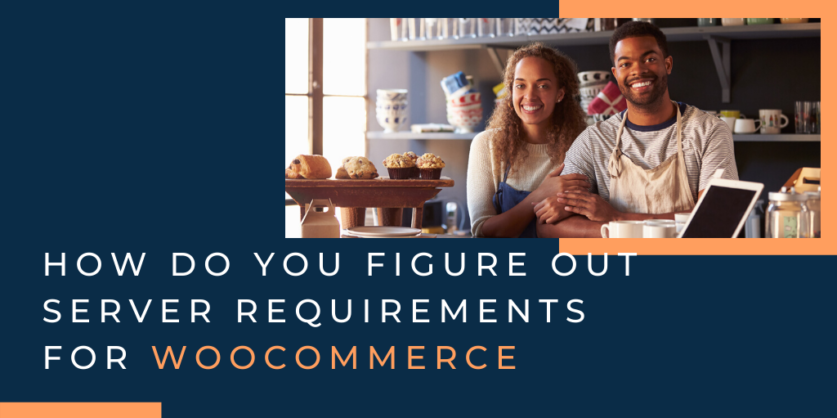
Most of the blog and information that is out there doesn’t really talk about how to actually calculate the server requirements. If those blogs are by affiliates – it’s even worse. Not only they recommend bad hosting – most of them have no clue as to what they are writing. All they want to achieve is an increase in commission rather than giving quality advice.
When you approach a hosting company directly their prime focus is to oversell you. They don’t work for optimal capacity that you will require. They will propose a server based on your budget rather than what is actually required for your store.
What data do I need to know about my server requirements?
This is the question that all hosting companies need to ask before a recommendation is provided. Not all stores are equal and have the same features. Which is why all server requirements for each store will be unique.
What is my average daily traffic?
This helps you to determine how busy your site is. It’s pretty simple to determine. Just login to Google Analytics and you will be able to find the information there. There is another factor that will help you to determine the actual traffic. Whether if you are using a CDN – if you are using CDN it will give you an idea as to the traffic that is served by their cache and traffic that actually comes to your server.

In this example above, close to 50% of the traffic is served by Cloudflare. So the traffic handled by the server is the uncached requests.
Average page visits per session
It depends upon the type of store. The number of page visits will depend on a lot of factors. For instance, if the entry to your site is on a landing page or whether they come to your catalog. If you have a store selling massive amounts of inventory, chances are that there will be people who will browse through your catalog before actual check-out.
Having a higher page visit per session will increase the concurrency on your website.
Local Caching
Apart from caching your site on CDN networks – having a caching locally will also make a difference. When a visitor comes to your site – WordPress/WooCommerce will query the DB to get in the data and then render the page to serve your visitor. If your website is optimized and you have a local caching (either via plugin or server-based) once the page has been cached and before cache expiry, another request for the page has been made it will serve the static cache page without querying the DB. This will not only made your website faster but will also reduce the pressure on the DB to run exactly the same query.
Bandwidth requirements
Bandwidth requirement is the function of the amount of data that is transferred from your server. This depends on what is the average page size or if the site is using a CDN or not.

This is an example of monthly bandwidth requirements for a WooCommerce site using CDN. The number that you need to focus on is the uncached data transfer.
Average Load times: Port Speed
One of the reasons why most of our clients want to move to our Managed WooCommerce is to improve their average load times. We have been doing surveys with a lot of clients, they optimize their WooCommerce site in order to improve their page speed. One of the factors they never consider is the port speed. Today even home internet is on 100+ MBPS. So, why have your website at a lower speed than even home bandwidth? This is the bottleneck. You need to know your current port speed, whether you want to have 100MBPS or 1GBPS or 10GBPS.
Geek Crunch Hosting offers 10GBPS hosting on all its cloud and dedicated servers.
Peak Period
It is during the peak time of the day when the sites are mostly liked to not serve your customers and you will quickly start losing your customers because the site was not available. Most of the eCommerce websites have a specific period(s) during the day when they peak. Your server needs to be ready to serve traffic during peak time + have the additional capacity – just so that you don’t run out of your resources.

Just login to your Google Analytics and display the weekly on an hourly basis. You will get peak traffic periods along with users. This will help you to plan your concurrency setting and capacity planning.
Storage Size & Type
The only thing that keeps on growing today is data. An eCommerce storage is usually divided into three components:
- Website Data Files (Images, Video, PHP Files, etc.)
- Database Size
- E-Mails
Depending on your current storage, you should be able to predict the storage requirements for the next 1 year.
Depending on your specific website, if there are a lot of I/O operations then it is recommended to take SSD Storage rather than SATA drives.
Conclusion
Once you have collected all this data a system administrator can help you to figure out an ideal hosting solution for you and not an ideal hosting from the point of view of sales. We have seen in the industry where without collecting enough data from the client’s server with the higher or lower specifications are sold. In both cases, it is a loss to the client. High specification means the client is paying for excess capacities. With lower specification clients are losing business as websites might not be able to serve at peak hours.
To get an optimal solution for your WooCommerce site, open a ticket and get in touch with our support.

No Comments - be the first.